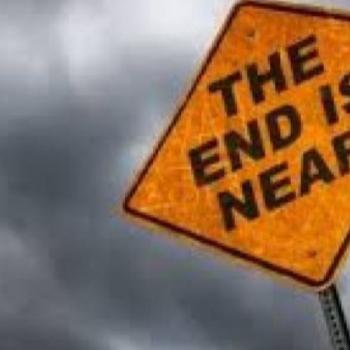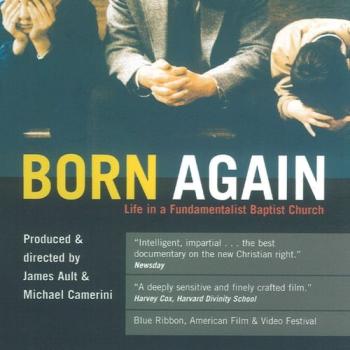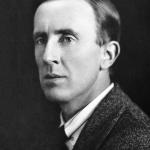One Cause of Christian Syncretism Beautifully Explained in a New Documentary: What Is New Thought?
If you are a Christian, especially an American Christian, and you are concerned about the eclectic blending of non-Christian philosophies and spiritualities with Christianity (syncretism) in contemporary American culture, you must watch “What Is New Thought?”—a documentary available on Amazon. It is free for those with Amazon Prime and can be purchased by others.
I have long known about and been very concerned about the subtle influence of the 19th century philosophy, spirituality, and movement known as New Thought both on American culture in general and on American Christianity. The documentary is pro-New Thought but gives a very helpful overview of New Thought history, major thinkers and promoters, varieties, and influences in American culture and religion—even where those influences are hardly noticed.
It is my opinion that New Thought, as presented in this documentary, is a major threat to orthodox Christianity and has brought about a condition in which thousands, perhaps millions, of Americans who think they are Christians are mentally and spiritually corrupted by what is basically a pagan worldview.
*Sidebar: The opinions expressed here are my own (or those of the guest writer); I do not speak for any other person, group or organization; nor do I imply that the opinions expressed here reflect those of any other person, group or organization unless I say so specifically. Before commenting read the entire post and the “Note to commenters” at its end.*
My own interest in New Thought goes back so far I can hardly remember its beginnings. One beginning was no doubt my exposure to so-called Transcendentalism (Ralph Waldo Emerson, et al.) in high school. I recognized immediately that the “Oversoul” was not the God of the Bible or of Christianity and yet was being promoted as completely compatible with God, the Bible, and Christianity by well-intentioned but misguided English teachers, some of who considered themselves orthodox Christians.
While in high school I worked part-time for a single proprietor cleaning company, cleaning windows and floors, etc., in homes and businesses around town. The receptionist and secretary was a very nice elderly woman who I quickly discovered was a member of the local Church of Christ, Scientist. That is to say, she was a “Christian Scientist.” I found several books in my father’s pastoral library that had chapters on Christian Science and New Thought and read up on the subject. (The roots of Christian Science are, as the documentary explains, in New Thought.)
Throughout my adult life I have been alert to New Thought’s influences in American culture and especially its subtle seeping into mainstream and even evangelical Christianity.
Relatives and friends had in their homes books by Norman Vincent Peale, a major Christian promoter of New Thought, as well as books and magazines published by various New Thought writers and publishers. Among them were Think and Grow Rich by New Thought philosopher Napoleon Hill and magazines published by the Unity School of Christianity. One related family had a “Promise Box” on their kitchen table with “affirmations” by Unity. They were evangelical Christians.
During my doctoral studies in Religious Studies at a major secular university I co-taught an undergraduate course entitled Deity, Mysticism, and the Occult. The main textbook was by a sociologist of religion about “new religious movements” in America and one section of the book was about New Thought and its many offshoots. I already knew some of them by reading the Handbook of Denominations in the United States which contained a section on New Thought groups. The textbook mentioned above talked about an “alternative reality tradition in the West” that consists of various manifestations of esoteric philosophy and spirituality including many forms of Gnosticism—including New Thought.
For many years I taught courses in Christian colleges, universities and churches about America’s cults and new religions and often worked into my talks and lectures information about New Thought. I was not surprised that I sometimes received pushback—especially in mainstream Protestant churches—as people steeped in New Thought were not happy about my treating it as a foreign body invading orthodox Christianity.
So what is New Thought? Well, my best suggestion is: Watch the documentary! For the most part it is accurate even if, in my opinion, it hides or chooses to ignore much of the metaphysical background to New Thought. A discerning watcher, however, will pick up on that—especially in the last quarter of the documentary with brief sayings, clichés, and subtle expressions of the underlying metaphysical worldview.
The modern New Thought philosophy, spirituality and movement is traced back to German Anton Mesmer (1734-1815) who practiced a kind of healing through magnetism and hypnotism. He discovered “mind over matter”—the mind’s ability to cure the body through positive thought. He became adept at healing people that way. Mesmer’s methods were picked up in America by the American founder of New Thought Phineas Parkhurst Quimby (1802-1866) who was credited for healing many people, including Christian Science founder Mary Baker Eddy (1821-1910). Quimby’s philosophy, such as it was, happened to coincide well with the rise of Transcendentalism in New England which emphasized God as the “Oversoul” of the universe—the all-connecting consciousness common to everyone (something like Carl Jung’s Well of Consciousness) a century before Jung.
The documentary quite accurately and helpfully describes the “ins and outs” of the rise of New Thought in America through many different teachers and therapists including the founders of Unity, husband and wife Charles and Myrtle Fillmore. Unity is probably the largest and most influential New Thought organization in America. Others include Religious Science and Divine Science of Mind.
The basic idea of New Thought, briefly mentioned in the documentary, is that “Our thoughts and beliefs create our reality.” Not explicitly mentioned in the documentary, however, is the metaphysical background of New Thought which is that our thoughts, at their best, are always already one with God and contain the power of God to create reality. In other words, positive thinking and speaking, “prayer,” tap into the universal consciousness that is God to create reality. Negativity, sickness, sin and death, are results of the human consciousness being out of tune with reality which is God or Emerson’s “Oversoul.”
Of course, New Thought takes many expressions and ways of thinking and talking about God, but beneath and within all of them is an equation of the power of the human mind with the power of God and a tendency to treat “prayer” as magic—the powerful manipulation of super-material force or power—“Spirit”–to create reality.
The first approximately thirty minutes of the documentary are about the beginnings and history of New Thought as a philosophy, spirituality and movement. Then, suddenly, the focus shifts to New Thought’s “trickle down” into many areas of American culture where its influence is felt but not recognized as such. This section of the documentary really begins with the influence of Reformed minister and writer Norman Vincent Peale (1898-1993)—a channel of New Thought into mainstream American religion and culture. According to the documentary Peale was strongly influenced by Unity. The documentary then mentions Reformed minister Robert Schuller (1926-2015) who followed in Peale’s footsteps and through his ministry also promoted New Thought but within a basically orthodox Christian theological framework. (The question is whether that is really possible and the documentary strongly hints that it is not, that New Thought alters Christianity away from orthodoxy when it is brought into traditional Christian settings.)
Then the documentary mentions allegedly secular “self-help” gurus such as Wayne Dyer (often seen and heard on PBS) who, according to the documentary, popularizes aspects of New Thought for audiences. Also mentioned are popular Christian writer and speaker Emmett Fox (1886-1951) who, together with Napoleon Hill, strongly promoted New Thought ideas wrapped in a quasi-Christian message.
Then the documentary turns to New Thought’s influence on Pentecostalism in the United States. I have long known about this. When I taught theology at Oral Roberts University a graduate student was writing a book about it. (D. R. McConnell, A Different Gospel) He traced that influence back to healing evangelist E. W. Kenyon (1867-1948) who studied New Thought at Emerson College and then blended it with Pentecostalism and the healing revival movements of the late 19th and early 20th centuries. The documentary specifically mentions Kenyon and states that he has been plagiarized by Pentecostal promoters of the Gospel of Health and Wealth also known as the Prosperity Gospel which echoes many of New Thought’s ideas.
Then the documentary turns to Joel Osteen, pastor of Houston’s Lakewood Church, one of the largest churches in the world, and author of numerous books. According to the documentary, Osteen is steeped in New Thought as was his father who pastored the church before him. The documentary says the elder Osteen was close friends with a Unity minister. It describes Joel Osteen as “a lot like a Unity minister who waves a Bible around.” It strongly hints that Osteen’s basic philosophy is New Thought but that he uses fundamentalist language to hold his Christian audience.
The documentary shows African-American pastor, evangelist, singer and author Carlton Pearson who speaks of a “new Christianity” strongly shaped by New Thought. (Pearson was a close friend of Oral Roberts when I taught at ORU in the early 1980s; he often sang in chapel services and was often seen at Oral’s side. Later he became a universalist and left orthodox Christianity behind.)
Then the documentary turns to the influence of New Thought on the wider “self-help” movement and industry and focuses on Oprah Winfrey and the book The Secret—both claimed to be steeped in New Thought ideas.
Then the documentary turns to New Thought’s influence on contemporary American business training techniques—the emphasis on positive thinking and speaking.
This is a documentary clearly made by adherents and proponents of New Thought that you ought to watch and even show to others—to illustrate how a basically non-Christian (from an orthodox perspective) philosophy, spirituality and movement can and has filtered into almost every corner of American culture and been accepted even by otherwise orthodox Christians.
So where is the conflict between New Thought and orthodox Christianity? It hurts me to have to explain it! But here goes…
For New Thought there is no personal, transcendent God who created the universe separate from himself out of nothing and there is no sin as rebellion, defection from his will. Nor is there any need for redemption through sacrifice or incarnation of God in a single human person or atoning death or bodily resurrection/empty tomb or second coming of Jesus Christ in any traditional sense. Nor is the Bible the realistic history of God’s mighty acts for our salvation.
For New Thought the Bible, if it is God’s Word at all, is a code book to be interpreted metaphysically and allegorically. For New Thought God is the One, the All, the Oversoul, positive consciousness Itself and all that is is part of or an emanation of That. Sin is ignorance, doubt, negative thought. Salvation is holistic healing through positive thought. Prayer is magical manipulation of reality, even creating reality, through positive thought. Jesus Christ is the ultimate therapist of positive thought.
As the documentary suggests (without naming it) New Thought descends from Gnosticism. It may not name matter as evil, but it regards matter as a limiting factor to be overcome by thought. It is pantheistic or panentheistic; it has no place for any orthodox doctrine of sin or salvation. It is a religion of self-salvation through wisdom (Gnosticism).
If the Gnostic roots of New Thought are still unclear to anyone (after watching the documentary) remember this key saying that flies by so quickly I’m sure many Christian viewers miss it: Jesus and Christ are not the same; “Christ” is in everyone. (The documentary often uses “you” when the speaker clearly means everyone.) In both Gnosticism and New Thought (as well as esoteric Western religions in general) “Christ” is a name for the God-consciousness latent within every person waiting to be realized and expressed.
New Thought goes way, way beyond ordinary, garden variety positive thinking or even mind over matter; it is a metaphysical worldview absolutely contrary to the gospel. And yet, as the documentary points out so helpfully it has entered into the American consciousness and become part of its warp and woof, filtering down into even mainstream and marginal Christianity in unrecognized forms.
Years ago I heard a sermon illustration that was intended to teach Christians that it is wrong to study cults and heresies and false religious beliefs and right only to focus on the truth of the gospel. According to this religious urban legend (“evangelegend”) when Secret Service agents teach bank tellers how to identify counterfeit money they never show them counterfeit money but make them study real money so that when the counterfeit appears they recognize it by how different it is from the real. The first time I heard the story I knew immediately it could not be true. It is so radically counter-intuitive. So, finally, I wrote to the Secret Service and received back a letter from an agent who teaches Secret Service agents how to teach bank tellers…. Anyway, the letter, which I still have in some file, informed me that the story is false—as I knew it was—and that they do show bank tellers samples of counterfeit money.
Unfortunately, our American Christian churches are so caught up in not being negative (!) and being positive that they usually fail to teach Christians about the false alternatives out there pretending to be Christian or “compatible with” Christianity. The failure of Christian leaders to speak out vocally against New Thought’s infiltration of Christianity contributed to that.
What I find so amazingly helpful about the documentary What Is New Thought? is its honesty and clarity—up to a point. I suspect, however, that even it will not be sufficient as a deterrent to many Christians “buying into” New Thought and that pastors who show it in their churches will have to explain how it is different from biblical, orthodox Christianity.
At the root of New Thought’s appeal, however, is not its tiny element of truth (positive thinking can be a good thing in its right place and time and to its right degree) but its repetition of the promise of the serpent in Genesis: “You shall be as God.”
*Note to commenters: This blog is not a discussion board; please respond with a question or comment only to me. If you do not share my evangelical Christian perspective (very broadly defined), feel free to ask a question for clarification, but know that this is not a space for debating incommensurate perspectives/worldviews. In any case, know that there is no guarantee that your question or comment will be posted by the moderator or answered by the writer. If you hope for your question or comment to appear here and be answered or responded to, make sure it is civil, respectful, and “on topic.” Do not comment if you have not read the entire post and do not misrepresent what it says. Keep any comment (including questions) to minimal length; do not post essays, sermons or testimonies here. Do not post links to internet sites here. This is a space for expressions of the blogger’s (or guest writers’) opinions and constructive dialogue among evangelical Christians (very broadly defined).

















